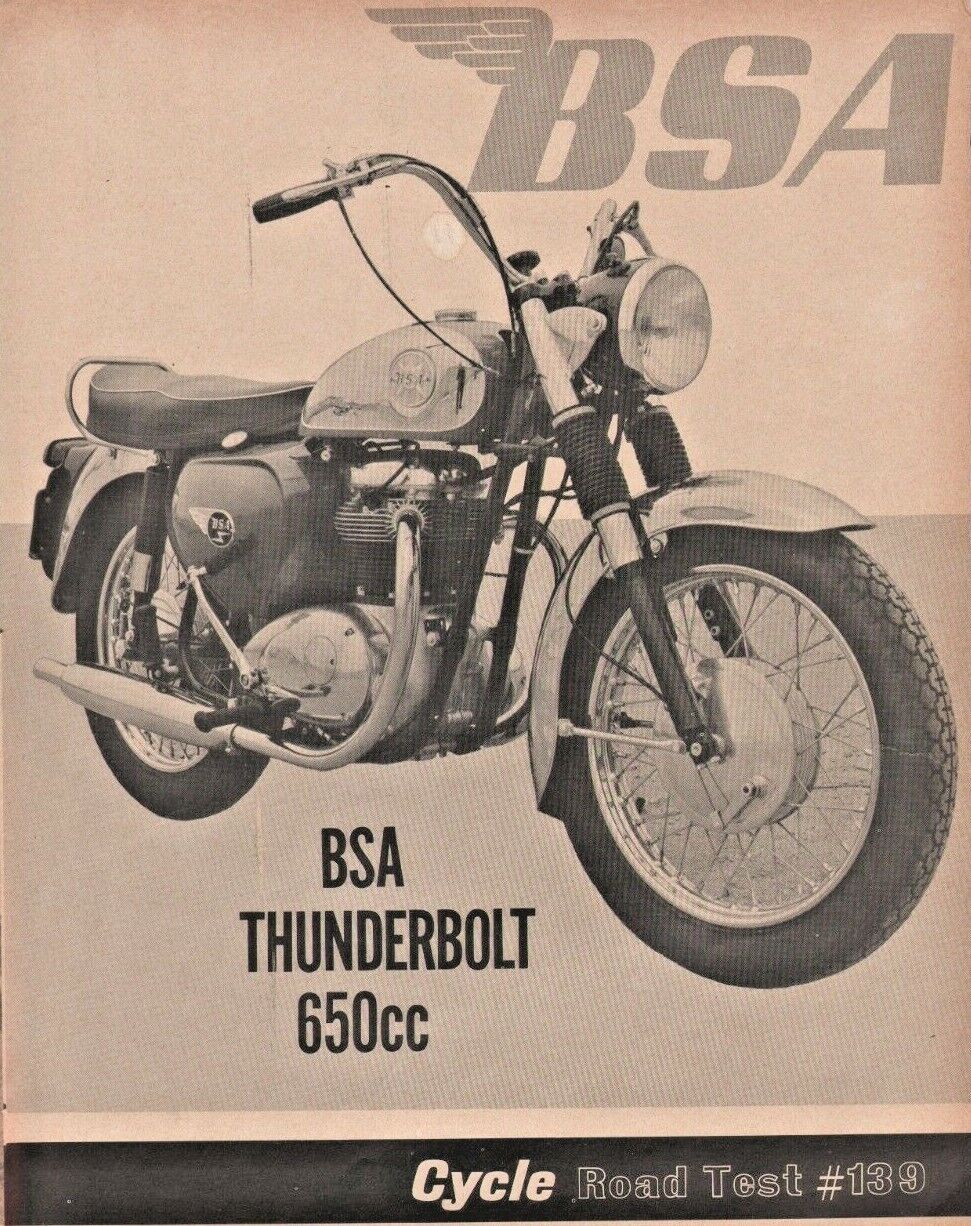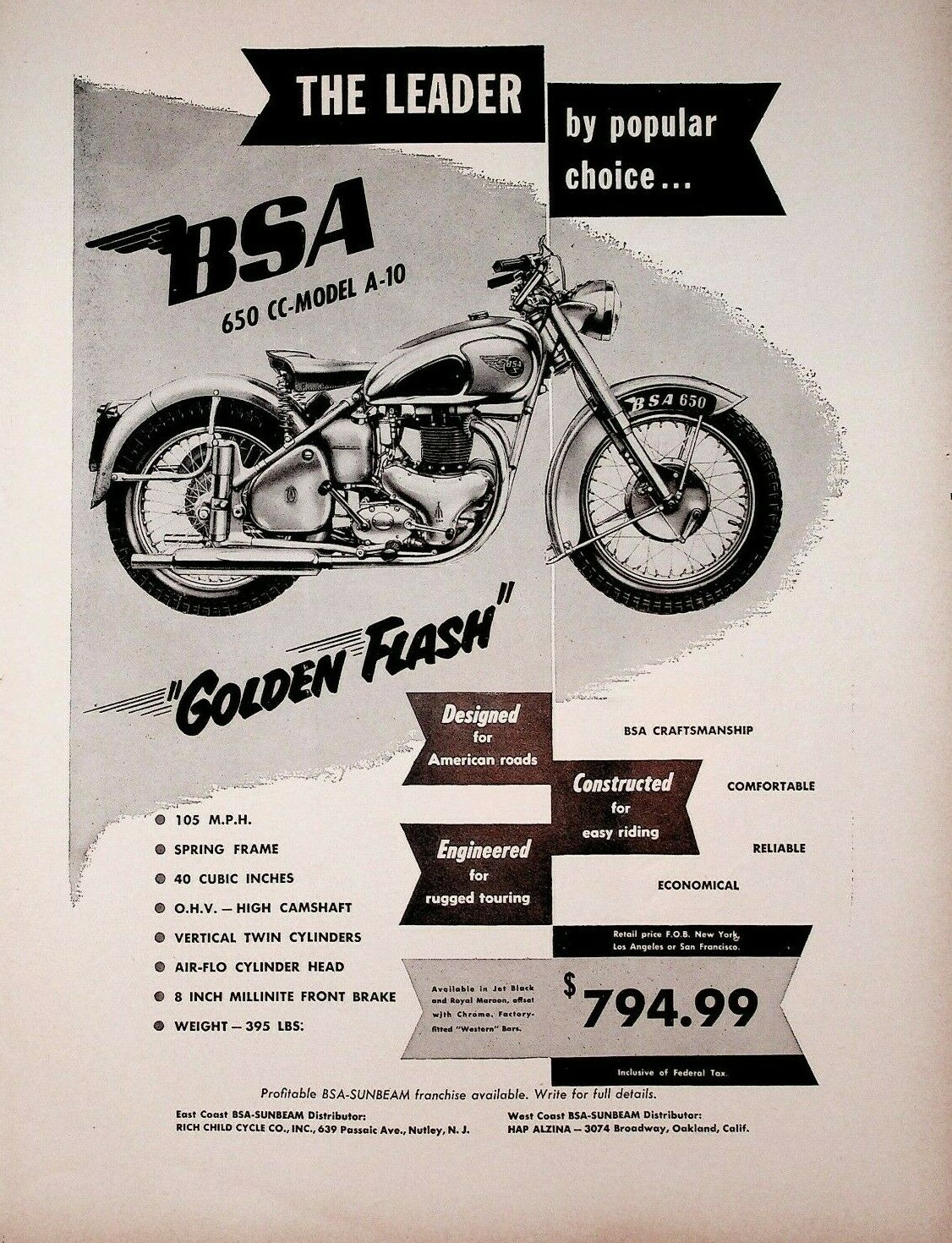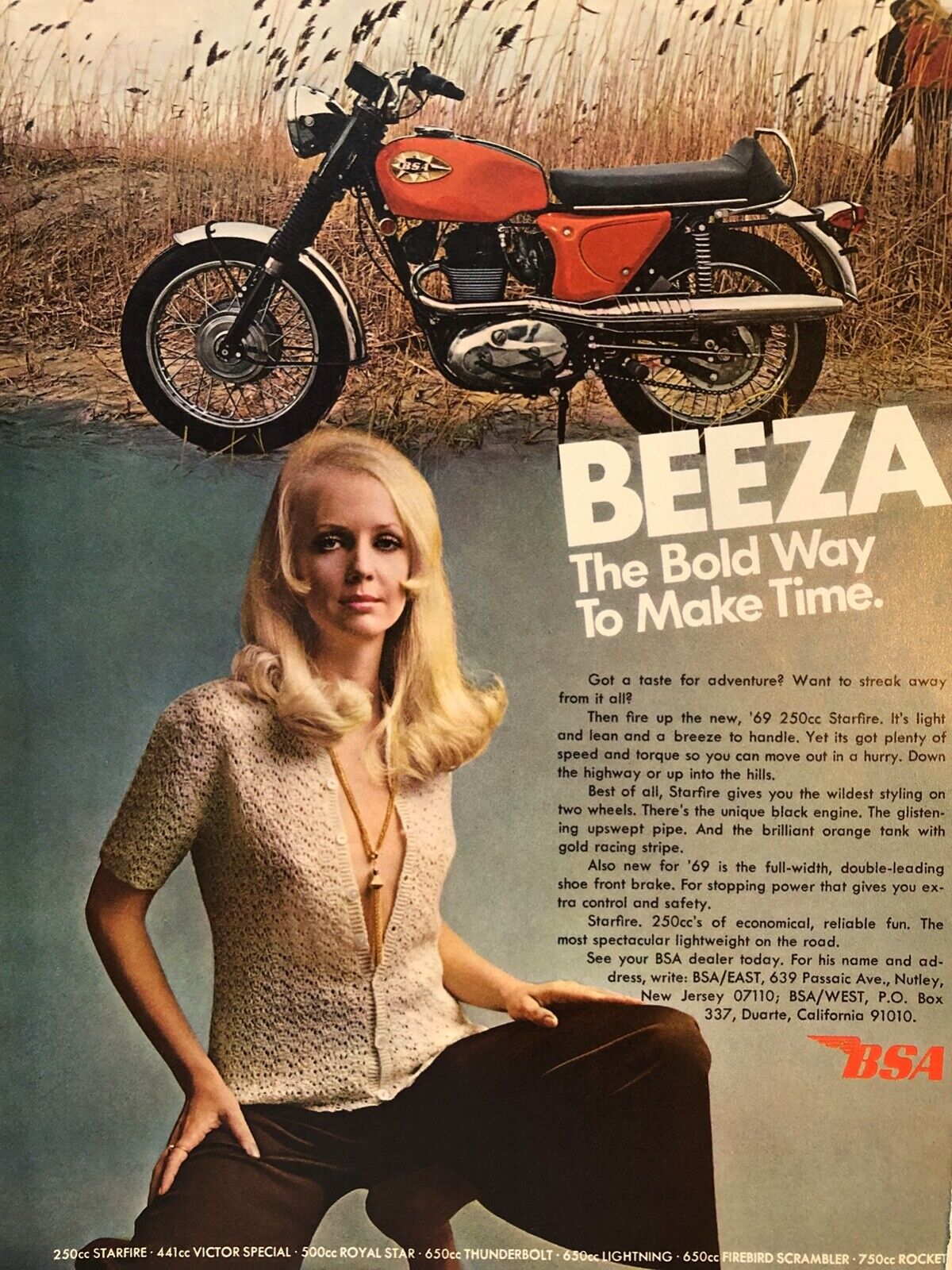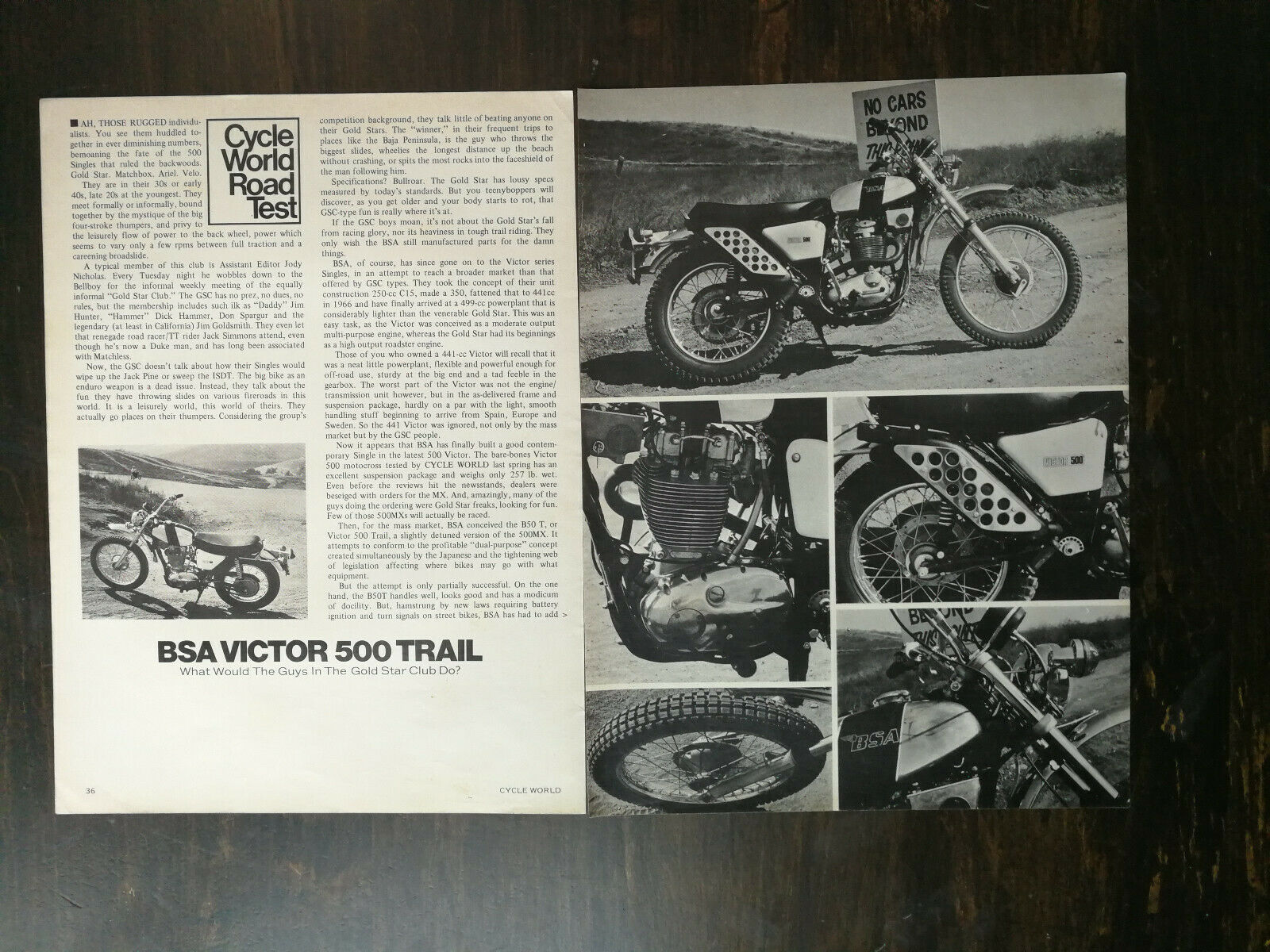-40%
1965 BSA Thunderbolt 650cc - 3-Page Vintage Motorcycle Road Test Article
$ 6.3
- Description
- Size Guide
Description
Yes we combine shipping for multiple purchases.Add multiple items to your cart and the combined shipping total will automatically be calculated.
1965 BSA Thunderbolt 650cc - 3-Page Vintage Motorcycle Road Test Article
Original, vintage magazine article
Page Size: Approx. 8" x 11" (21 cm x 28 cm) each page
Condition: Good
Prospective buyers of large motorcycles often find themselves
bewildered by the many different models of each brand and the
purposes of each. ‘‘Should I buy the 500 with dual carbs or the
650 with one carb? Or perhaps the ultra-hot 650 with dual carbs?”
Usually the price variations between these large displacement bikes
are not significant enough to persuade the rider either way. It
becomes necessary for him to analyze his motorcycle wants and
needs in terms of how much power will be sufficient, how "sporty”
does he want his machine to appear, and how much time is he
willing to spend keeping the bike in top tune.
In the BSA line the basic difference between the ultra-hot
Lightning Rocket and the tamer, more conservative Thunderbolt
is in degree: degree of power and appearance. Basically the same
bikes, the Lightning is obviously intended more for the all-out
performance fan, the guy who refuses to be outdone from a
stoplight. Dual carbs, tachometer, sports fenders and racing
brakes characterize the Lightning. Although the typical BSA
lavish use of chrome extends to the Thunderbolt, a less racy
appearance results from the fully valanced fenders, headlight-
mounted speedometer, and enclosed single carburetor. It must
not. be thought for a minute, however, that the Thunderbolt is
lacking anything in the performance department.
The sound emitted from the large diameter twin pipes told
us immediately that this was a full-fledged “mover”, not merely
a soft riding tourer. It’s a deep, throaty tone that approaches a
“cracking” level during heavy acceleration. The powerful sound
is further enhanced by the fact that there is very little engine
noise. The BSA factory has done an amazing job of “sealing in”
the usual clicks and clacks, allowing only the pleasing mu filer
sound to penetrate the eardrum.
It is little wonder that the engine is so quiet. A glance reveals
that the BSA powerhouse is a fully modernistic, enclosed unit.
The cases are smoothly blended into the total design and the
cooling fins add another touch of streamlining.
Though not quite the all-out “screamer” (hat the Lightning is,
the Thunderbolt is not very much slower. The same camshaft is
used on both models, and both utilize the advance design hemi-
spherical cylinder head with large valves, streamlined intake ports,
and high-compression pistons (9:1). The exhaust system pro-
vides the ultimate in efficient scavenging for a street machine.
The only basic difference between the engines of the Lightning
and the Thunderbolt is carburetion. The Thunderbolt has only
one I’Zs" Amal unit while the Lightning runs a pair of them.
That extra carb helps on all-out speed runs, but for normal, fast
highway cruising, few riders will feel deprived of miles-per-hour
on the Thunderbolt. Our test machine was fairly well broken in
and showed tendencies to really “blast” from a dead slop, some-
times taking to the rear wheel. Acceleration was also swift
enough to raise the front wheel on powershifts into 2nd and 3rd
gears. Top speed will be high enough for practically any rider.
Although our road test did not include an all-out top end run,
past experience told us that the 100 mph mark could be surpassed
without great strain. For some reason BSA refrains from making
public horsepower figures. But a ride around the block assures
you that the Thunderbolt horsepower rating would certainly be
nothing to be ashamed of.
The bike’s handling is greatly aided by the excellent rider
position. Footpegs are low enough and handlebars high enough
to allow complete freedom of movement and a superior feeling
of control. Brake and shift levers are most ideally situated. The
seat is exceptionally soft.
The overall handling impression closely approaches that of a
lighter weight motorcycle; In fact, some 250’s we have ridden
demand more muscle and rider effort than this bike, weighing
nearly 400 pounds. Cornering rates average; we found our-
selves sweeping somewhat too widely through turns, having to...
12721-6508-04









